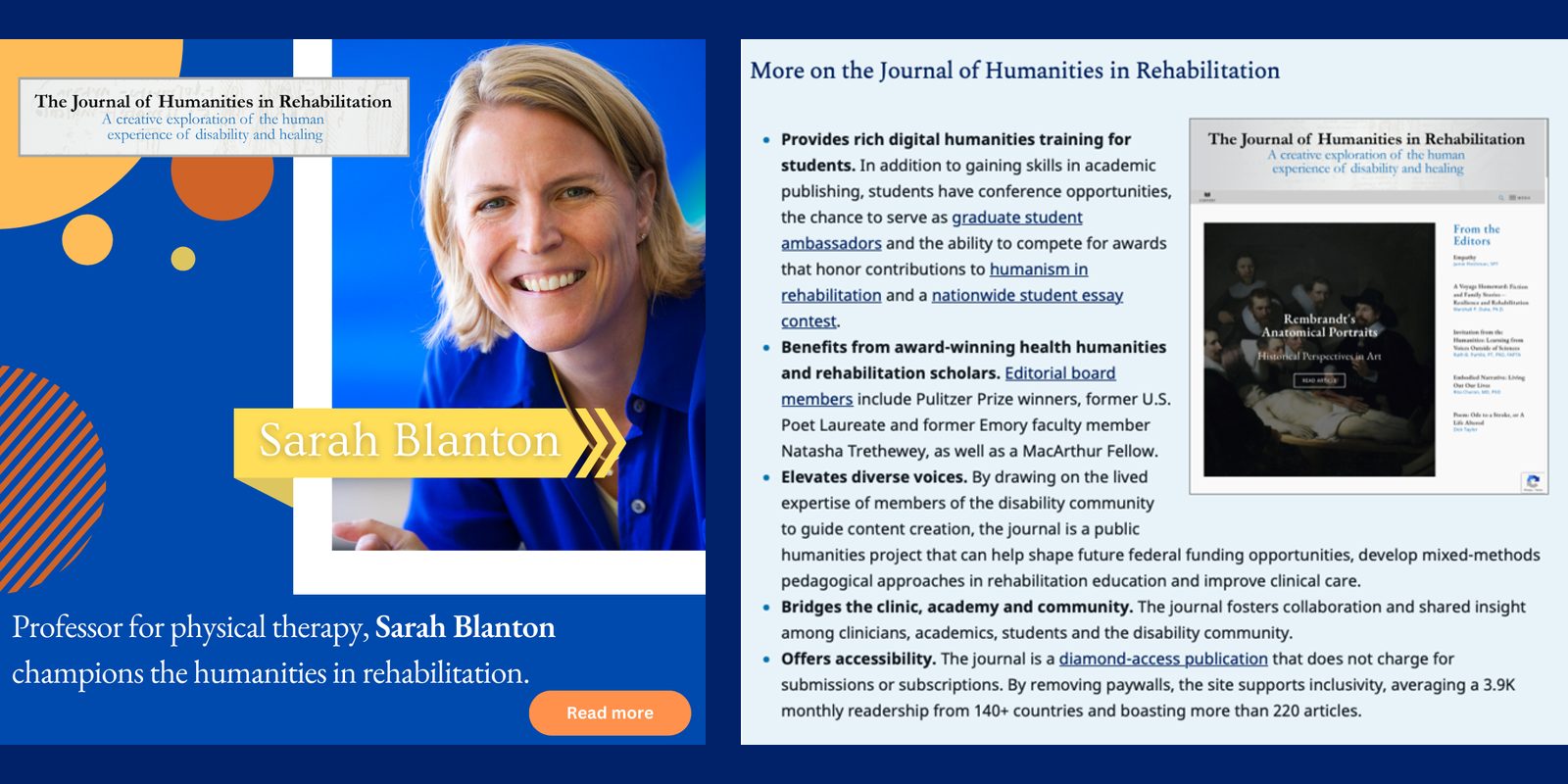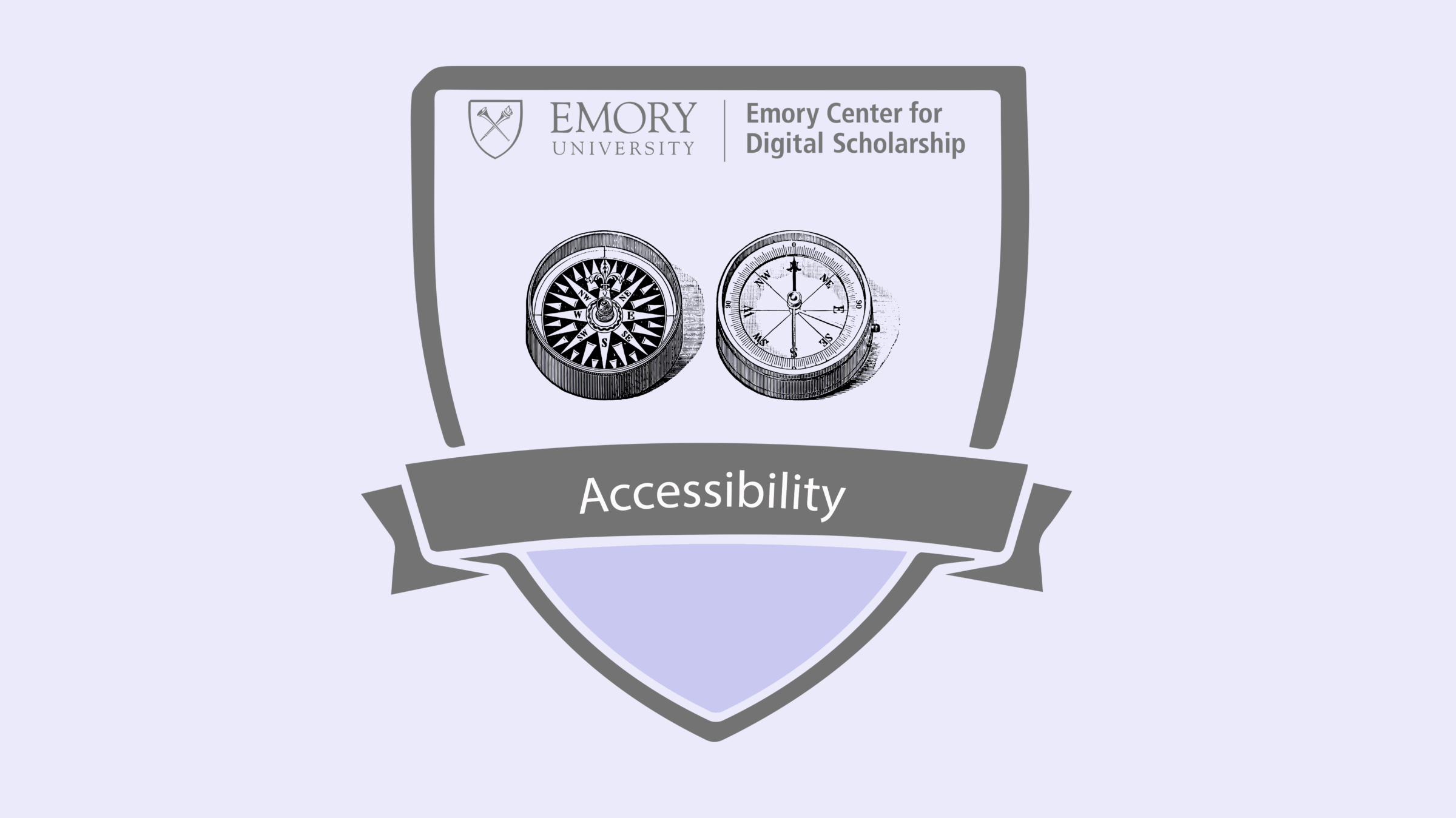On July 26, 1990, the Americans with Disabilities Act (ADA) was signed into law, resulting in unprecedented protections and opportunities for people with disabilities. The ADA signing has been so significant that July 26 is nationally considered Disability Independence Day, and the month of July is celebrated as Disability Pride Month. Two sections of the law deal with accessibility in digital spaces. More broadly, digital accessibility is the ability of a website, digital platform, mobile application, or electronic document to be easily navigated and understood by a wide range of users, including those users who have visual, auditory, motor, or cognitive disabilities.
“While enormous strides have been made towards the inclusion of people with disabilities over these past 30 years, much remains to be done to ensure accessibility in workplaces, schools, and businesses, including here at Emory. And the work of making Emory more accessible cannot merely be a job for our Department of Accessibility Services but must be a goal that we all strive for in our work,” writes former Digital Scholarship Associate Adam P. Newman.
Since 2018, ECDS has been working to improve the accessibility of digital scholarship through collaborations with other Emory organizations and initiatives and through improved uses of photo/video captions. In 2020, ECDS, Emory’s Disability Studies Initiative, and the Digital Publishing in the Humanities Program at the Fox Center for Humanistic Inquiry co-hosted a lecture from Dr. Sean Zdenek. Dr. Zdenek’s lecture addressed the need to enhance captioning so it more fully conveys meaning and becomes more accessible to wider communities. Read more about Dr. Zdenek’s lecture and ECDS’ approach to digital accessibility here: Disability Pride Month and Digital Accessibility.
ECDS staff members have worked on a collection of best practices and suggestions for digital accessibility in digital humanities. You can find our Accessibility Guidelines on the new ECDS training website. These guidelines provide methods of increasing accessibility to areas of digital scholarship such as audio and video recordings, web design, mapping, and audiovisual media.
[The training website will officially be launched later this year, but you can already create a free account (with your Emory or private email address) and start exploring the different courses!]
Project Spotlight: Digital Projects focused on Disability and Accessibility
ECDS also partners with faculty-led projects that center questions and topics related to disability, research, and accessibility. In 2014, we partnered with Dr. Sarah Blanton, a Professor of Physical Therapy, to launch the Journal of Humanities in Rehabilitation (JHR) – the first peer-reviewed, interdisciplinary journal dedicated to the integration of humanities in rehabilitation sciences and the first rehabilitation journal to collaborate with international disability scholars. By adopting a transdisciplinary approach to integrate humanities, disability studies and rehabilitation, along with fostering collaborative community partnerships, the JHR addresses the complex and pervasive health inequities faced by the disability community.

Disability rights activists coined the slogan “Nothing about us without us” during the 1990s. Supporting this goal, the JHR is a rare scientific journal that provides a platform for the co-creation of content with and for people with disabilities, their carepartners and the rehabilitation community. “With the JHR,” says Jensen, a member of the editorial advisory board, “Sarah brings forward, with great respect, the voices of patients, families and caregivers. I do not know of another journal that does that. For those of us in PT, the journal is our ‘north star’ in providing a much-needed understanding of the human condition; it also makes us better at working together for the well-being of our patients.” By adopting a transdisciplinary approach to integrate humanities, disability studies and rehabilitation, along with fostering collaborative community partnerships, the JHR addresses the complex and pervasive health inequities faced by the disability community.
“Our next goal,” says Blanton, “is to find funding to enable the journal to be the first publication to engage members from the disability community as editorial staff, providing an opportunity for decision-making and power-sharing to help shape content, evaluate accessibility and broaden readership to more diverse communities.”

